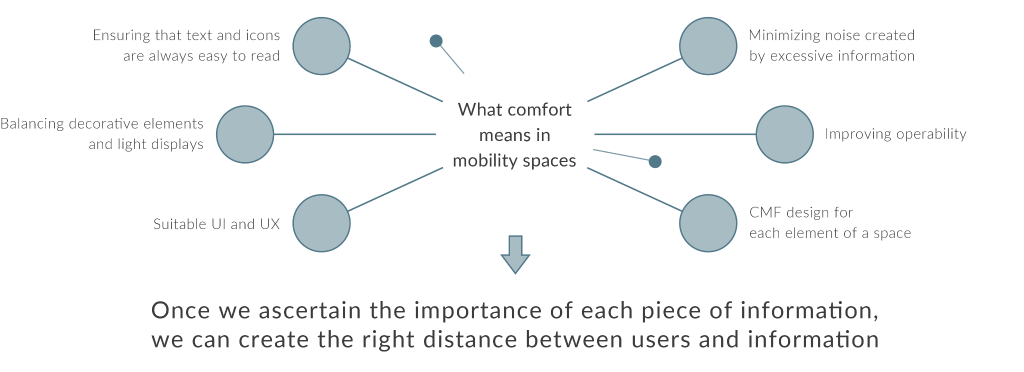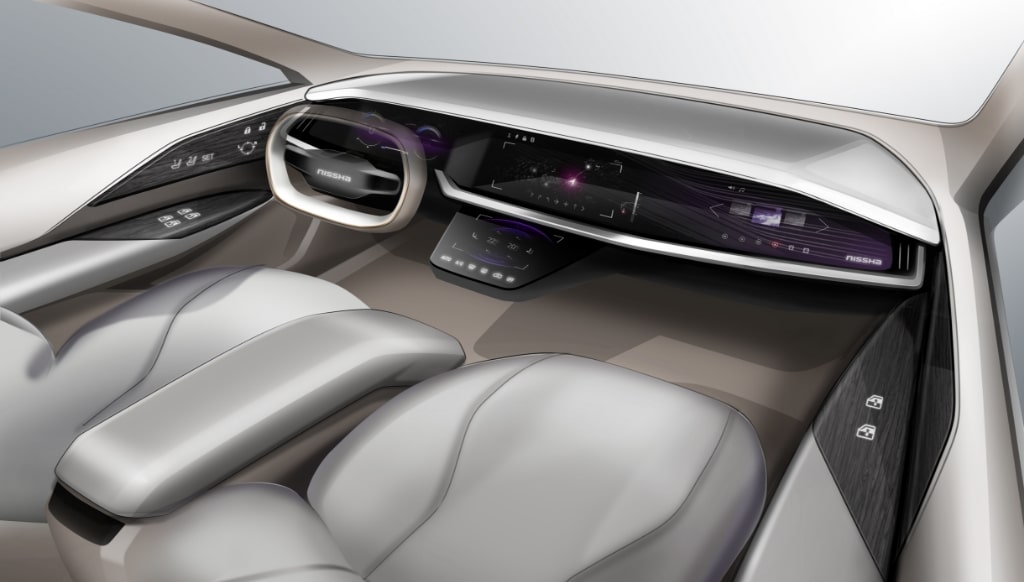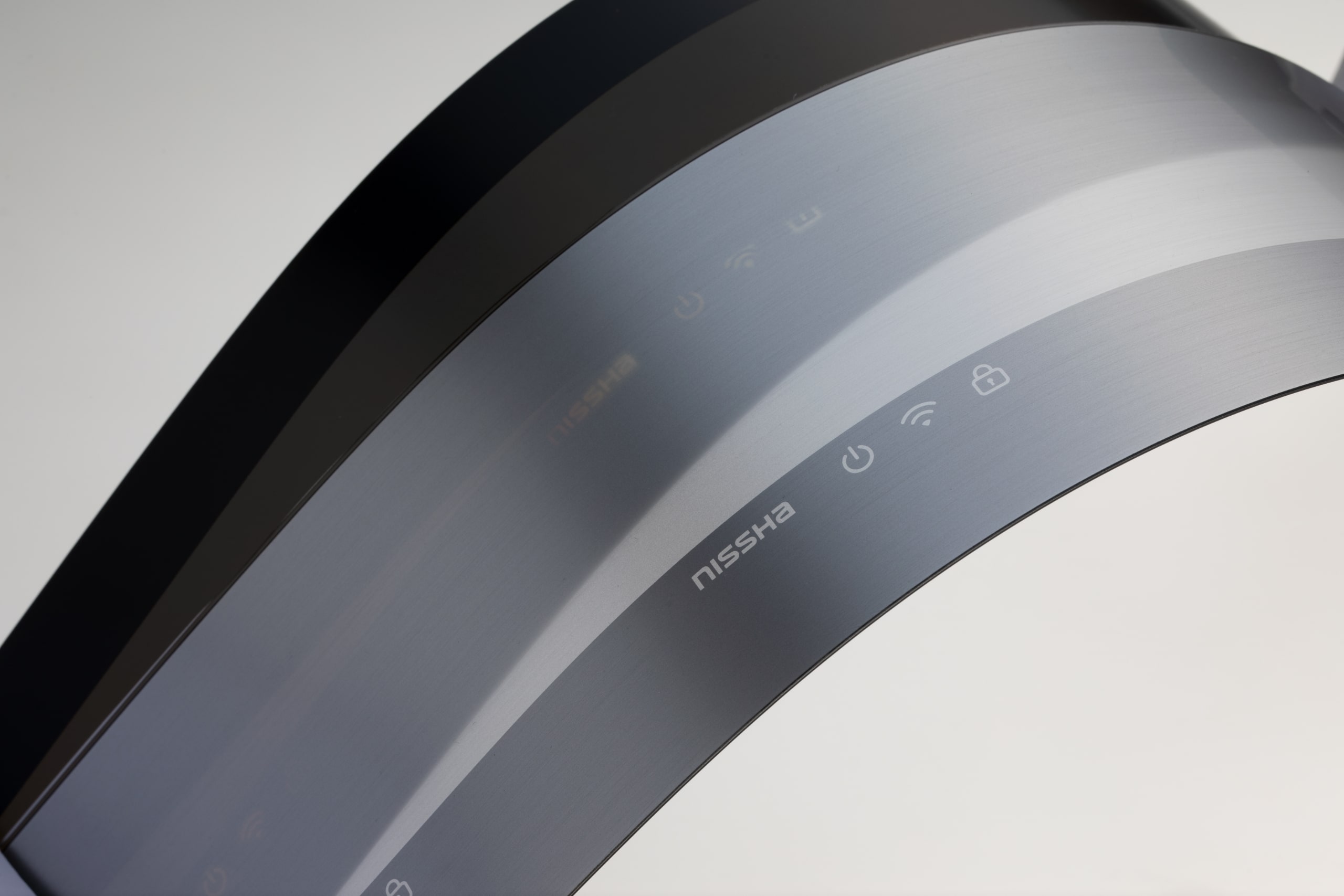Pursuit of a comfortable interface that harmonizes with the interior
As CMF designers, our role in each new product is to consider what kind of design will be comfortable for the user.
Think about car displays, for example. Have you ever sat in your car and been stressed out by the sheer volume of information being beamed into your face by the displays? That’s the kind of issue we tackle. We looked for ways we could use Nissha’s technology to solve this issue, and we arrived at a solution.
Our solution is this: information is displayed only when the user needs to see it, in the optimal position in the car’s interior, and is not visible the rest of the time. This provides users with a comfortable experience with minimum visual noise. The comfort we pursue goes beyond the colors, material and finish in our job title and considers the users’ entire experience.

Hidden-til-lit design and seamlessness achieves a stylish design
Independent trend analysis by the Design & CMF Group confirmed a tendency we’ve seen elsewhere: it’s common for people to value sleek, sophisticated product design.
The most crucial element of a sophisticated, stylish design is that unnecessary visual noise is eliminated. For example, indentations at the joins between parts are avoided wherever possible to create a seamless appearance where each structure melds into the others. In the case of user interface, we can see this trend in the shift from physical buttons to touch panels. Displays are not obtrusive; they blend in with the structures around them.

The beautiful, comfortable experience created by reducing visual noise is in particular demand in technology such as mobility interiors and IoT appliances, which are integral elements of people’s living spaces. As part of our initiatives to provide users with a comfortable experience, Nissha has developed technology for resin touch screen parts that display information only when it is needed. The LEDs or LCDs used to display the information are transparent in an optical design format called hidden-til-lit (Dead Front)*. This format has been combined with decorative elements and finishes created by CMF designers in a variety of revolutionary new products that meet users’ need for comfort.
Technology where hidden-til-lit displays are used: Mobility interiors, water purifiers, washing machines, air purifiers, air conditioners, etc.
*This technology is known as “hidden-til-lit” or “dead front” in North America, and “hidden effect” in Europe and Asia.
The crossover to large products
Nissha’s full-scale work on hidden-til-lit designs began in the early 2000s, when we began mass-producing display cover parts for NOKIA mobile phones. The display needed to have a seamless presence when it was turned off, so that users couldn’t see where the display ended and the surrounding area began. Then, when the display was turned on, the necessary information needed to be displayed cleanly. Hidden-til-lit technology began as small transparent parts and eventually evolved into resin parts with various decorative elements and functions.
Over time, this technology crossed over from small handheld devices to larger products, such as the control panels of household appliances such as refrigerators and washing machines. Today, hidden-til-lit designs are also used in mobility interiors to improve safety and comfort. The progression was from small to large, from select slivers of people’s space to the spaces where people live and finally the way people travel.

It is crucial to remember that hidden-til-lit is the latest design trend in car interiors and there is an increasing call for its use. Designers in Europe were the first to recognize that the soft, elegant light from this technology created an indirect light source in mobility spaces, and this trend has spread to many areas of the world, including Japan. As EVs become more widely adopted and advances in self-driving car technology take place, we are likely to see a call for hidden-til-lit illumination technology that enhances drivers’ and passengers’ experience.
Comfort is a constant in users’ needs, and as technology evolves, Nissha’s designers make sure that comfort will not be sacrificed as new technological elements are adopted.



